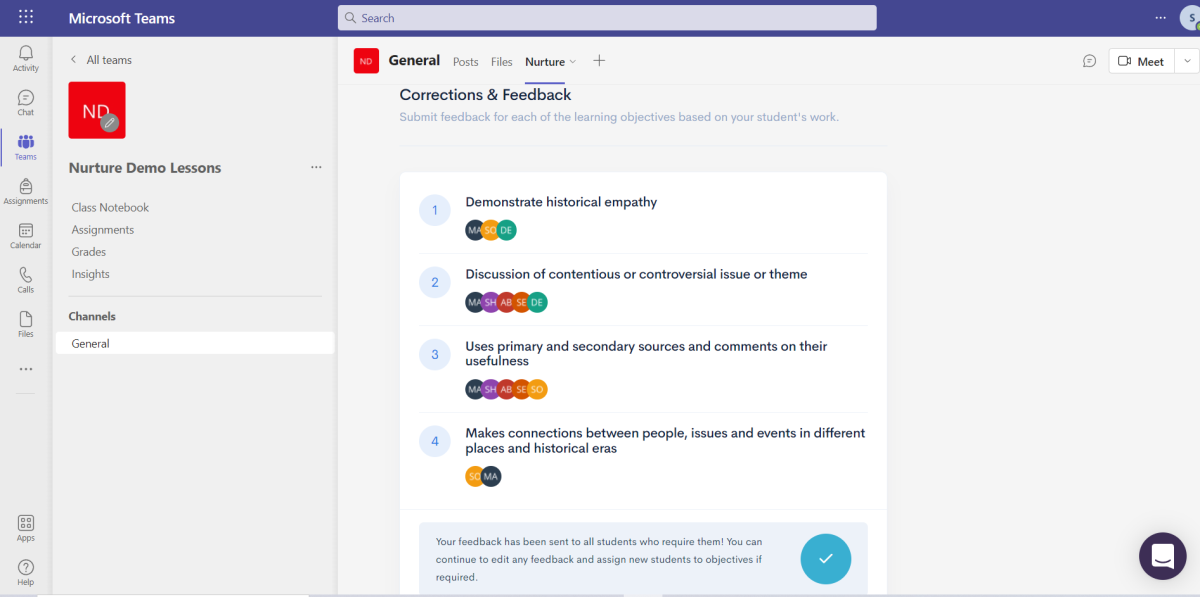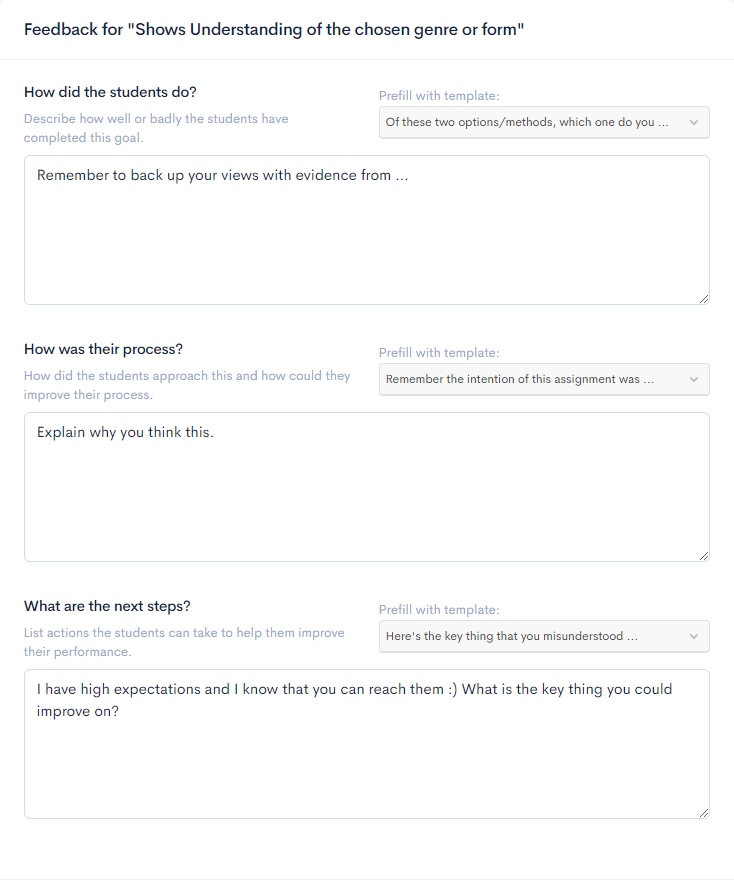Feedback types: simple and deep
Nurture offers two ways to provide feedback to your students: deep and simple.
This video gives a brief overview of Nurture's feedback types.
Simple feedback
Simple feedback offers the ability to capture student confidence and close the feedback loop without providing in-depth formative feedback. Simple feedback is great because it not only provides unique insights and closes the feedback loop, but it also provides information on students' current progress. This information allows for a rapid response to student needs—just in time teaching!
Just like deep feedback, simple feedback groups students based on common areas of need.
Here's a helpful tip, these groupings make for great group work in the following class! Try identifying those who succeed in the learning objective and ask them to help explain the concept or content to their peers.

Deep feedback
Deep feedback uses Nurture's research backed framework to provide a time efficient way to provide powerful and effective formative feedback to students to move their learning forward. Recall in the previous unit how feedback needs to answer three questions:
- Where am I going?
- How am I going?
- Where to next?
These are referred to as task level, process level and self-regulation. Nurture groups students according to their areas of need—based on the learning objectives teachers create. In doing so, Nurture provides an overview of classes' areas for improvement. This is where the magic begins! Usually teachers might give each student "two stars and a wish" as formative feedback. Instead, Nurture provides feedback at the three levels identified above for each learning objective. This means each student receives the exact feedback they need to move forward. Since this is at the learning objective level, the three pieces of feedback apply to all students who were identified as needing improvement in that objective.
Nurture also provides helpful feedback stems specific to each level of feedback. As time goes on, teachers become expert in giving this feedback without these prompts.
Nurture recommends using deep feedback at discrete junctures in your teaching plans, for example, at the end of a unit or topic—think monthly.
